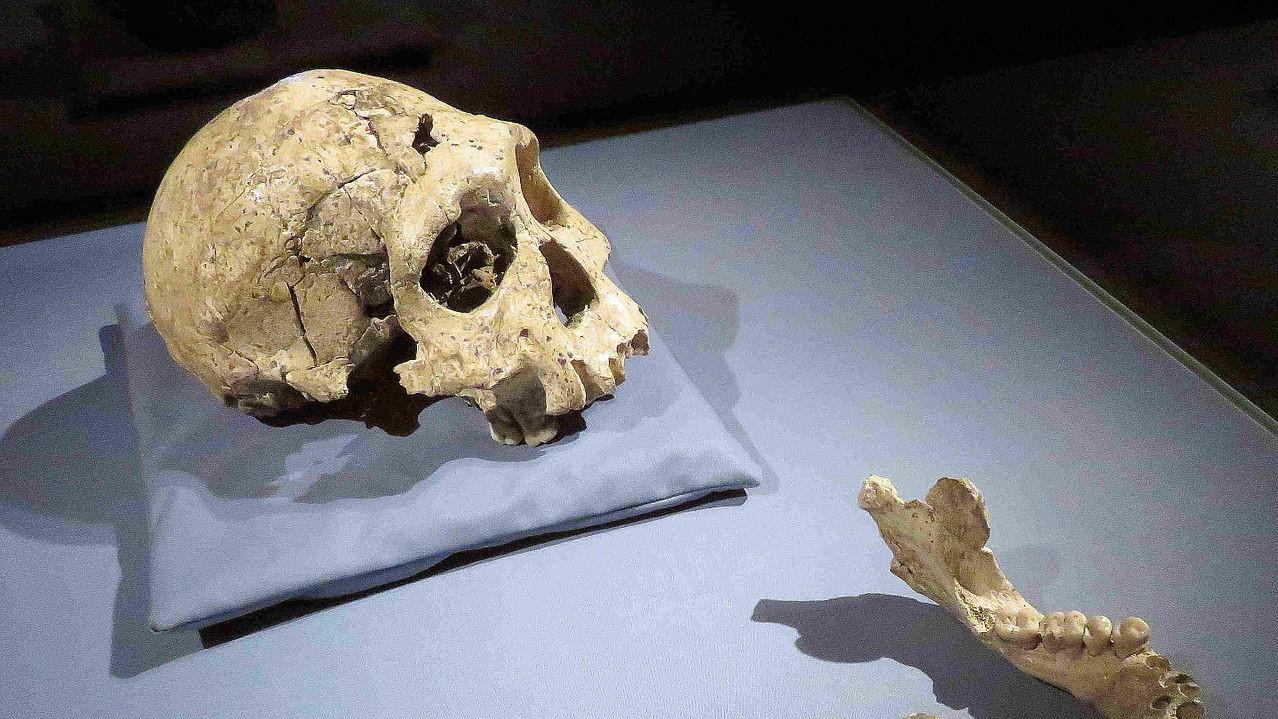
Submitted by Dr C.M. Martin-Jones on Fri, 11/08/2023 - 09:42
Around 1.1 million years ago extreme glacial cooling likely caused an extinction of early humans in Europe, according to a study led by UCL and involving scientists from the University of Cambridge.
The oldest known human remains in Europe have been recovered from Iberia and suggest that early humans had arrived from southwest Αsia by about 1.4 million years ago. The climate around this time was characterized by warm and wet periods alternating with mild cold periods.
The prevailing theory, therefore, has been that once humans arrived, they were able to survive through multiple climate cycles and adapt to increasingly deteriorating conditions after 900 thousand years ago.
But the new study challenges that theory, “Our discovery of an extreme glacial cooling event around 1.1 million years ago challenges the idea of continuous early human occupation of Europe”, according to senior author Professor Chronis Tzedakis from UCL.
Palaeoclimate scientists from the University of Cambridge were involved in analysing the isotopic signature and chemistry of deep ocean sediments collected from the Iberian Margin, off the coast of Portugal, at part of the International Ocean Discovery Program (IODP) Expedition 339.
“Combining this work with terrestrial pollen and alkenone sea surface temperature analyses from the same core allowed us to link vegetation changes in Europe with local and global climate changes,” said Cambridge Earth Science’s Professor David Hodell.
The findings revealed the presence of abrupt climate changes that culminated in an extreme glacial cooling, with ocean surface temperatures off Lisbon dropping below 6°C and semi-desert expanding on the adjacent land.
Lead author Dr Vasiliki Margari from UCL said: “To our surprise, we found that this cooling at 1.1 million years ago was comparable to some of the most severe events of recent ice ages.”
A cooling of this magnitude would have placed small hunter-gatherer bands under considerable stress, “especially since early humans may have lacked adaptations such as sufficient fat insulation and also the means to make fire, effective clothing or shelters” according to co-author Professor Nick Ashton of the British Museum.
To assess the climate impact on early human populations, Professor Axel Timmermann and his team from the IBS Center for Climate Physics ran a climate model simulation on their supercomputer Aleph to capture the extreme conditions during this time. Combining the output of the simulation with fossil and archeological evidence of human occupation in SW Eurasia, the team then developed a human habitat model, which predicts how suitable the environment was for early human occupation “The results showed that 1.1 million years ago climate around the Mediterranean became too hostile for archaic humans” said Professor Axel Timmermann, co-author of the study.
Together, the data and model results suggest that Iberia, and more generally southern Europe, was depopulated at least once in the Early Pleistocene. An apparent lack of stone tools and human remains over the next 200 thousand years raises the intriguing possibility of a long-lasting hiatus in European occupation. Co-author Professor Chris Stringer of the Natural History Museum in London said: “According to this scenario, Europe may have been recolonized around 900 thousand years ago by more resilient humans with evolutionary or behavioral changes that allowed survival in the increasing intensity of glacial conditions”.
The Shackleton Site
The importance of sediments from the Iberian Margin was first demonstrated by the late Professor Nick Shackleton and Dr Luke Skinner, who showed that proxy indicators of ocean temperatures contained within them mirrored those of the polar ice cores. Since then, Iberian sediments have played a pivotal role in palaeoclimate research. In 2022 further core samples, spanning back 5.3 million years, were collected from the Iberian Margin, and they are currently being analyzed in Cambridge’s Godwin Lab.
Read more about the Shackleton drilling here.
Reference: Margari, V., Hodell, D. A., Parfitt, S. A., Ashton, N. M., Grimalt, J. O., Kim, H., ... & Tzedakis, P. C. (2023). Extreme glacial cooling likely led to hominin depopulation of Europe in the Early Pleistocene. Science, 381(6658), 693-699.
Feature image: Homo erectus fossil found in Dmanisi, Georgia in 2001. Credit: Wikipedia Commons / Gerbil, CC BY 3.0
Story adapted from a UCL press release.
